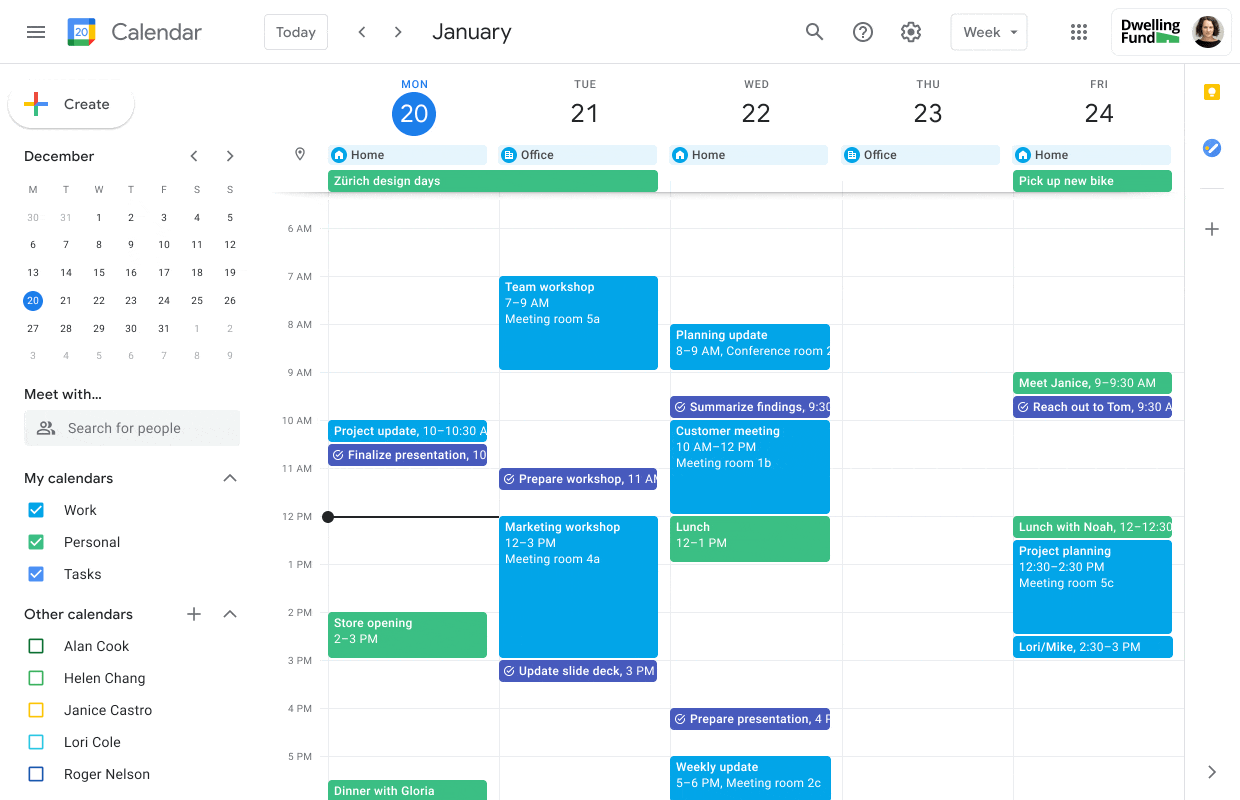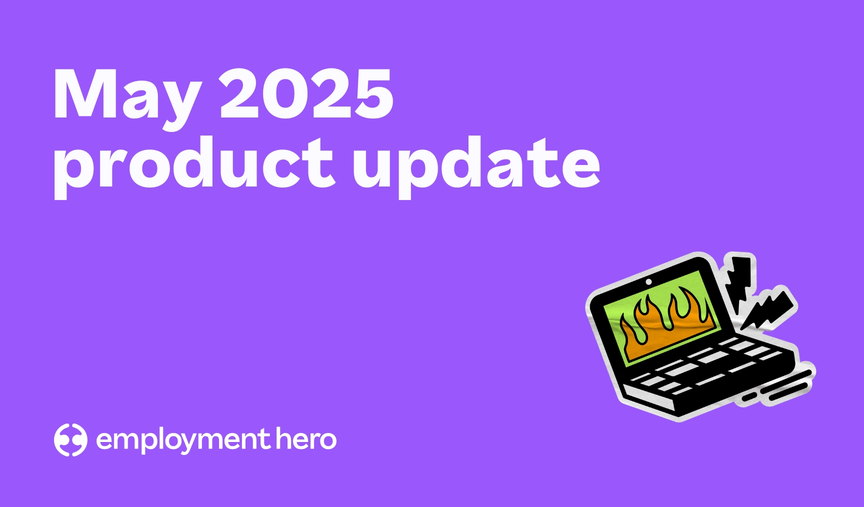9 tips to foster a more inclusive hybrid workplace
It’s more important than ever for leaders to be mindful that hybrid work can create or exacerbate certain inequalities, and amplify in-group and out-group dynamics.

Contents
Hands up if you’ve returned to work in the office, but still enjoy the flexibility of hybrid working! You’re one of the lucky ones. To be able to enjoy the social interactions of the office whilst also getting deep work done at home — nothing beats getting the best of both worlds. Thanks to the pandemic, work-life balance has crept to the top of our priority list.
Whilst hybrid work may seem like the most ideal way for companies to run their teams now, there are still plenty of challenges that come with a hybrid workforce. And although hybrid work brings about many benefits, tapping into those is a difficult and delicate task — few companies have shown that they’ve succeeded.
For leaders who are currently managing a hybrid team, creating inclusive practices between in-office and home-working employees is one of the key challenges to overcome. It’s more important than ever for leaders to be mindful that hybrid work can create or exacerbate certain inequalities, and amplify in-group and out-group dynamics.
As we pivot and adapt to a new landscape, existing processes need to be reevaluated with a diversity, equity and inclusion lens — so areas of improvement can be identified and worked upon.
Why is having an inclusive hybrid workplace so important?
There’s one thing that’s clear to all of us — the hybrid working model is here to stay, but a poorly executed one could lead to increased departures, poor performance, and ultimately, a hit on the company’s bottom line. Creating and maintaining an inclusive workplace culture is already a huge struggle for most companies, but the adoption of hybrid work has further complicated matters.

A McKinsey report has shown that an inclusive workplace will be necessary for organisations to attract and retain top talent, as well as ensure high productivity and performance. And in today’s context, it means that there is a greater challenge ahead — how can companies maintain inclusivity with the added barriers of hybrid working?
McKinsey also found that of employees currently working in a hybrid model, 85% of them wanted it retained. What was more interesting however, was the fact that some traditionally underrepresented groups (employees with disabilities, nonbinary employees, and LGBT+ employees) demonstrated an even stronger preference for hybrid work.
Clearly, hybrid work helps to relieve the strain of employees having to hide their disability, gender identity, or sexual orientation, along with the stigma that comes associated with it. But ideally, organisations should be providing an inclusive environment in which these employees feel comfortable in their own skin, and sharing their identities with colleagues.
Research from our upcoming Remote Work Report found that hybrid and remote work has a positive impact on marginalised groups, because it creates more equitable employment opportunities for those who may not have them otherwise. People such as carers, people with disabilities, or those unable to commute to the office due to their geographical location have often been excluded from the full range of career options. Flexible and remote working can open up these opportunities.
Managing hybrid teams inclusively is no easy feat, and will prove to be a testing ground for leaders to demonstrate their leadership skills and methods amidst evolving employee expectations. But ultimately, by embracing and supporting each employee’s different needs, you are paving the way for all employees to work effectively, productively, and most importantly — comfortably.
So how can we foster a more inclusive hybrid workplace?

1. Eliminate proximity bias
It’s a dilemma that many remote employees have been grappling with. They are worried and anxious about potentially falling out of favour with bosses and higher management, if they are not seen around the office as much as others.
Their worries are not unfounded. Managers continue to retain a bias towards in-office workers — a Gartner survey revealed that 64% of managers believe that office workers are higher performers than remote workers, and are more inclined to give in-office workers a higher raise than those who work from home.
Another study by SHRM also found that 67% of supervisors surveyed admitted to considering remote workers more easily replaceable than onsite workers. In addition, 62% believed full-time remote work would be detrimental to the career objectives of employees, and 72% preferred for their subordinates to work from the office.
Sadly, traditional mindsets still associate productivity with ‘facetime’ and visibility in the workplace. Companies need to realise that physically working at the office full-time doesn’t necessarily translate to good results and high productivity — the same can be achieved while working remotely too.
To ensure an inclusive, hybrid environment, everyone must have equal opportunities for advancement. Leaders should treat and engage employees equally, regardless of their physical presence. Don’t play favourites. It’s essential for managers to recognise if they have an ‘out of sight, out of mind’ mentality, and correct that unconscious bias immediately.
2. Be a good role model
Employees look to superiors as role models, so managers, it’s on you to lead by example. Strike a balance between working from home and from the office, so employees know that you’re fully supportive of the hybrid work model, and feel comfortable enough to do the same too.
Rather than leaving remote workers feeling left out of meetings, or waiting on the company to implement hybrid meeting etiquette, take the reins and be proactive about how you lead your team. Be intentional about each meeting — ensure that all the relevant employees are included, and that there is enough time for everyone to make themselves heard.
Most meetings that combine a mixture of in-office employees and remote workers aren’t equitable no matter how well it’s organised — the majority of the discussion ends up amongst those who are in the office physically, whilst the remote workers dialling in struggle to listen clearly and keep up with the conversation.
Hybrid will not work if every employee is creating their own adventure. As a manager or team lead, dictate a hybrid schedule that works best for your team. Set aside on-site days for brainstorming meetings that require more collaborative and creative thinking, and reserve off-site days for virtual meetings and deep focus work.
3. Cover all bases with onboarding

Interviews have become increasingly virtual. Recruitment and onboarding practices are now done online, where geographical locations are no longer a barrier. With the rapid shift towards digital transformation, being technologically capable has become an essential skill in most workplaces.
Prior to the pandemic, employees could just rock up to the office on their first day, and have their desks all set up and ready to go. If they ran into any network or software issues on their monitor, laptop, or phones, they could walk over to the IT department or ping an IT technician to come over and get some help with troubleshooting. Alternatively, they could also ask the colleagues sitting around them on how to do things.
With hybrid working however, if the new hire starts their first day or week remotely, it would be helpful to give them a key point of contact they can reach out to for IT assistance, and a detailed checklist of things they need to complete, such as creating user accounts and relevant login details. We’ve got a handy employee onboarding and induction checklist template here that you can use, to create a standout employee induction experience your new starters will never forget.
For remote new hires who have started in their roles, the quality of training depends solely on their manager. Unlike in-office employees who can quickly pick up on accepted ways of working, network naturally and hear valuable information, remote workers might struggle with a steep learning curve, or be seen as less competent than their onsite peers because of the lack of office exposure.
To combat this inequality, companies should consider implementing a buddy system, so new hires have someone they can lean on for help. It’s always reassuring to have a go-to friend or mentor within the company that they can reach out to for all kinds of informal questions regarding office culture and the company, so they aren’t disadvantaged by their working arrangement.
4. Check in regularly

The physical distance makes it hard to check in on colleagues and see how they’re doing, especially when all you see is their faces onscreen for a short period of time. You can’t tell if they’re having a bad day or struggling with something personal if they put up a strong front for virtual meetings, as compared to seeing them in person at the office. Employees can also be struggling with remoteliness if they’re not able to connect with their teammates in person.
A good solution would be to make use of statuses on messaging platforms — regardless of whether you’re using Microsoft Teams or Slack, simply saying you’re ‘open to chat!’ or ‘keen to hang out!’ is a great way of bridging the distance.
Sometimes all it takes is a little nudge to get conversations going. A simple message like ‘How was your weekend?’ or ‘Wanna hop on for a quick chat?’ gets the ball rolling for a no-frills, chill session with your colleagues where you can talk about anything and everything, or pour out any grievances and discuss solutions to difficulties you are facing.
It’s easy to get carried away working independently in a hybrid workplace, but connecting with your teammates is important in building stronger relationships. We’ve got more tips on staying connected virtually to your coworkers here.
5. Create a psychologically safe environment
With hybrid working, it also entails the potential for interpersonal conflict or silent bullying that is visible only to the parties involved. While remote work allows employees to avoid other colleagues they aren’t comfortable with physically, it can affect teamwork and employee engagement if there is a lack of open, honest communication to iron out issues.
If employees feel marginalised, targeted, or attacked, it will only make it harder for them to voice out their opinions and instead choose to suffer in silence. This can have a detrimental effect on the overall team performance and morale, where having diverse perspectives and discussions are vital.
Fostering a psychologically safe environment where all voices feel comfortable to be heard is important, so employees will speak up if they are experiencing interpersonal conflict. This is why 1:1 meetings are crucial especially when dealing with hybrid work — managers can check in on an employee’s wellbeing regardless of their location, whilst employees can have candid conversations in a safe space. Managers can then take relevant next steps to mediate and resolve the conflict in an amicable way.
It’s also ideal for managers to show in group meetings that having healthy debates is beneficial for everyone. Employees can have conflicting viewpoints, but the end goal is to discuss them together and arrive at a consensus. Each individual’s opinion should be carefully considered and treated respectfully, not haphazardly dismissed.
6. Break up silos

Hybrid work inadvertently creates in-groups and out-groups depending on an employee’s work preference. There are those who are enthusiastic about returning to the office regularly, while others keep it to the bare minimum and prefer working remotely.
This however, can lead to remote employees being excluded from important conversations, or missing out on information regarding key projects and accounts. Cliques might even form within teams, with members who return to the office seen as more active in resolving issues or sharing knowledge, versus their remote colleagues.
A great way to break these in-groups up is to ensure that all crucial information is recorded or written down, and communicated throughout the organisation smoothly. This ensures that every employee has access to it, and can refer back to it or slowly digest it in their own time — regardless of whether they are working from home or the office.
Another great way is to appoint someone who works onsite most of the time to provide updates to the rest of the team. It’s always handy having a key point of contact that everyone can rely on to represent the team’s interests, and glean any insights or noteworthy updates they’ve received from casual conversations in the office.
Ultimately, team meetings are great for aligning everyone on the same page and providing transparency. Encourage a culture of learning and sharing amongst the team, so there won’t be any ‘groups within groups’, but a supportive and collaborative environment instead.
7. Embrace tools that help with DEI and hybrid working
Digital tools have become synonymous with hybrid working. With so many kinds of software features out there, there’s really no excuse not to provide everyone with a voice, wherever they are. It’s all about building collaboration equity in the workplace, and platforms like Google Workspaces have sought to bridge the hybrid work gaps wherever possible.
Did you know that with Google Calendar, apart from indicating whether you’d be joining physically or virtually when accepting meeting invites, you can now set your location for each work day? All these capabilities help to provide greater visibility in hybrid teams, and also facilitate the planning of on-site or virtual meetings more effectively.

AI has also brought huge advancements to video conferencing capabilities, which now have transcription and translation functions to aid those who are hearing or vision-impaired, as well as employees who speak different languages. In addition, AI hiring platforms can now help to remove racial, gender, disability and other biases — something companies should really adopt to have a diverse and inclusive hiring program.
Messaging platforms like Slack also enable you to create all kinds of channels for easy communication and information sharing, integrate with various work applications for collaborative working, and most of all, facilitate asynchronous working across time zones. Recorded meetings also enable employees in different countries to access the same updates and information, despite not being physically or virtually present.
Apart from digital tools, physical set-ups are equally important too. Many employees were forced by the pandemic to work from their dining tables at home, with nothing but a laptop and a stiff seat — leading to neck aches and back pain after a whole day of work. This is in stark contrast to pre-pandemic conditions where they had access to ergonomic office desks and chairs, widescreen monitors, meeting rooms for complete privacy and more.
For companies offering a hybrid work arrangement, consider providing a small stipend for employees to improve their workspaces at home. Having a good pair of headphones or a huge monitor makes all the difference in driving productivity and efficiency. If you want hybrid work to be a successful option for your company, you need to make sure that employees are well-provided for wherever they are, so they can produce their best work.
8. Empathy and transparency is key

With hybrid work, it’s important to reinforce and reiterate the fact that there’s no one-size-fits-all policy.
We are all unique and different in our own way, and it’s important for all employees to maintain a mutual understanding and respect for each other’s preferences at work. Some employees prefer working from the office full-time because they are young singles or empty-nesters, while others adore working remotely because of long commutes or family responsibilities.
Work-life balance can take a different meaning for each person, so teams should aim to be empathetic and supportive at all times — but employees need to be accountable for themselves too, of course. An emphasis on transparency and clear communication helps provide visibility to the team, so teammates can jump in and help when necessary.
9. Reward and recognise outcomes
With hybrid work, it’s much more important to place emphasis on the outcomes, and not the process. It isn’t about how many hours they’ve spent in the office, or completing it remotely at home — as long as they get the job done well, it’s a job well done.
Highlighting the excellent work your employees have done, or getting them to broadcast and share their wins in team meetings and across the organisation is a great way to showcase their work, regardless of whether it was done on-site or off-site.
Here at Employment Hero, reward and recognition is a key part of our culture. Managers and peers can give shout-outs to each other via the platform, messaging channels, or at our fortnightly All-Hands meeting. It helps to boost employee morale and keep productivity levels high by showing that every employee is valued and appreciated for their hard work.

Navigating hybrid work is a learning journey
In the words of Jared Spataro, Microsoft’s corporate vice president for modern work, “The shift to a hybrid workplace doesn’t start with new technology or corporate policies. It begins with culture — one that embraces a growth mindset, a willingness to reimagine nearly every aspect of the way work gets done.”
Navigating the world of hybrid work is a learning process, and no organisation has got it down pat. What’s important is for companies to constantly adapt to the needs of employees and try out new ways of working, to make the workplace feel equitable and inclusive of all team members. Create a hybrid work model with intention.
Ensuring that employees of different backgrounds, locations, or status feel valued within the workplace will prevent top talent from walking out the door, and enhance your company’s productivity and performance.
Employment Hero makes running hybrid teams easy with extensive people management functionalities, along with reward and recognition, 1:1 meetings, and more built into the platform. Book a demo today to find out how we can help!
Related Resources
-
 Read more: Product Update: May 2025
Read more: Product Update: May 2025Product Update: May 2025
Follow our May 2025 product update as we share all of the latest and greatest features we’ve released over the…
-
 Read more: Product Update: April 2025
Read more: Product Update: April 2025Product Update: April 2025
Follow our April 2025 product update as we share all of the latest and greatest features we’ve released over the…
-
 Read more: Product Update: March 2025
Read more: Product Update: March 2025Product Update: March 2025
Follow our March 2025 product update as we share all of the latest and greatest features we’ve released over the…








